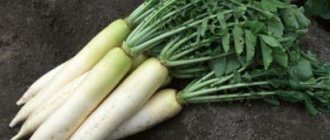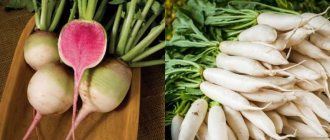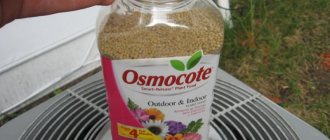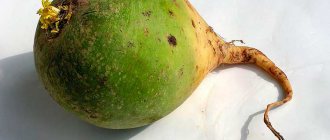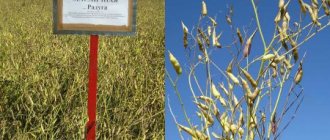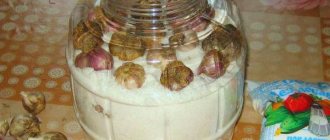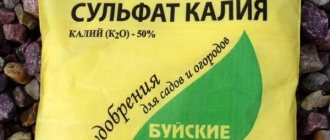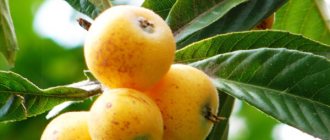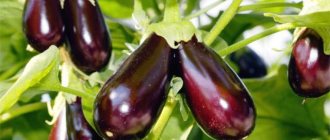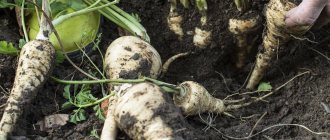Description
Let's consider what daikon (Japanese, Chinese vegetable) radish or radish is. Daikon is a large, pale white root vegetable that is considered a subspecies of radish. Daikon belongs to the cabbage (cruciferous) family. The Japanese vegetable acquired its name due to its origin; radish is in great demand in Asia.
Daikon appeared in Russia at the end of the 19th century, and instantly received the names “white radish” and “sweet radish” because of its appearance and taste. Daikon is considered a relative of cabbage, radishes, and turnips. Radish and radish are close relatives. This is all one relative, one family.
The roots of daikon are large, larger than those of radish . The usual weight is up to 4 kilograms. In Japan, their weight reaches 16 kilograms. This radish is a giant, reaching sixty centimeters in length and ten centimeters in diameter. Unlike ordinary radish, this root vegetable does not have a bitter taste and has a delicate aroma and juiciness.
Grows in different types of soil, but is best in loose soil and clay soil rich in nutrients. The plant is considered cold-resistant and can tolerate temperatures down to minus 4 degrees. The fruits appear after 1.5 - 2 months.
You also need to take into account that daikon is considered a short-day plant. The sooner you plant the seeds, the faster the fruits will appear. The optimal planting months are late July and early August.
Indian radish (Madras radish)
And this radish is famous for the fact that it is not the “roots” that are used for food, but the “tops”. Or rather, green pods in milky ripeness, which are eaten both fresh and boiled or pickled.
Indian radish is traditionally grown in the countries of Southeast Asia; it is especially popular in the north of India, where the name comes from. With due diligence, this plant is not difficult to grow in our latitudes, although so far it has not become particularly widespread in Russia, although it is known to experienced gardeners.
The taste of young Indian radish pods is delicate, piquant, and slightly spicy. The pods are soft and juicy, but the long light root vegetable is hard and “woody” and is not eaten.
Indian radish produces 3-6 “harvests” of pods per season (depending on the timing of sowing). From a well-developed plant, about 500 g of pods can be collected in one harvest.
This “simple” radish is so incredibly diverse and complex. Do you grow this valuable vegetable on your plot? If yes, then share your favorite varieties in the comments.
Chemical composition
Daikon is very rich in vitamins and minerals . This suggests that the vegetable has many essential substances. Taking it daily can help:
in strengthening the immune system;- providing antibacterial and bacteriostatic effects;
- improving the functioning of the gastrointestinal tract;
- preventing the occurrence and formation of diseases of the cardiovascular system and diabetes.
Just 100 grams of daikon contains almost half of the body's daily requirement for vitamin C, 4% magnesium and copper, and 8% folic acid.
Contains a large number:
- beta-carotene;
- all B vitamins;
- iodine;
- iron;
- phosphorus;
- chromium.
Benefits and harms
- Daikon is a low-calorie vegetable.
- Radish helps cleanse the body of harmful components and release toxins, for this reason it can be safely included as a dietary product.
- The main benefit of daikon is that the pectin, calcium and essential oils it contains form an excellent combination for cleansing the kidneys, liver and dissolving kidney stones.
- Thanks to its significant components, the Japanese vegetable can help keep the heart and lungs healthy.
- The benefits of daikon have been noticed in the presence of diseases of the digestive and nervous systems.
- In addition, it is able to increase productivity, improve mental health, and reduce the possibility of cancer.
- Daikon includes a huge number of phytoncides that destroy bacteria and protect the body from infections.
- Daikon can help to properly absorb fats, proteins and carbohydrates, in addition, it removes excess water from the body.
- Fructose is the main type of sugar found in daikon, which is why it may be beneficial for people with diabetes.
- There are very few contraindications for consumption. This is an environmentally friendly root vegetable that can be safely consumed by people of all ages.
Important! It is better for children to start trying radish after 4 years. It is best to add daikon to the salad, little by little. Radish contains a large amount of fiber, which can become a difficult problem for a child’s gastrointestinal tract. If the child likes the vegetable, then you can eat a little of it.
- Radish can cause significant difficulties in people suffering from stomach ulcers.
- Worsening chronic kidney and liver diseases, gastritis, gout are also considered a contraindication for consuming root vegetables.
- The harm from daikon lies in its predisposition to cause flatulence (accumulation of gases) and indigestion in the stomach.
- This is a difficult product to digest, for this reason the fairer sex will have to abstain from it during pregnancy and lactation.
Treatment
- Daikon is often used as a medicine for colds and flu.
- The juice of the vegetable can help cure pneumonia and bronchitis.
- For example, a cold remedy consists of daikon juice, honey and lemon juice. The product has a powerful antibacterial, strengthening, coughing effect.
- Regular consumption of vegetable dishes with added daikon can help strengthen the immune system. When you are sick, taking vitamin C results in a speedy recovery.
- Doctors advise using daikon for cardiovascular diseases, as radish nectar can help get rid of bad cholesterol.
- An ointment for joint pain consisting of fresh daikon juice, honey, and 70% alcohol has become widely used. The ointment should be rubbed into the affected joints to eliminate pain and for prevention purposes.
You will find more information about the chemical composition, benefits, harms and medicinal uses of daikon radish in this article.
Daikon radish: use in folk medicine
Let's consider several options for using this root vegetable in folk medicine.
The first option for using a real root vegetable in folk medicine. Using grated daikon, you can heal abrasions and cracks. The pre-rubbed mass is applied to the wound and wrapped with a bandage on top.
The second option is to use this root vegetable in folk medicine. Daikon tinctures can also be used for radiculitis, rheumatism, they reduce the level of pain.
The third option for using this root vegetable in folk medicine. To prevent atheros from appearing in old age, sclerosis should be added to the salad with a small amount of daikon. You can eat about one hundred and fifty grams per day.
The fourth option for using this root vegetable in folk medicine. The juice of this variety helps reduce sugar levels.
The fifth option for using this root vegetable in folk medicine. You can eat three tablespoons of daikon juice after meals per day.
The sixth option for using this root vegetable in folk medicine. Radish juice can be stored for no more than twenty-four hours.
The seventh option for using a real root vegetable in folk medicine. The juice can also be used as a laxative. Without pills, you can solve the problem of constipation, if any.
Varieties and types with photos
There are various varieties of daikon , and later in the article you will see photos of “Japanese white long” radish and others. Let us present a description of the best varieties of vegetables that can be grown from seeds in open and protected ground.
"Sasha"
It is considered a cold-resistant early ripening variety. It weighs up to 400 grams. It grows in a period of 35 to 40 days. Grown in open and protected ground.
"Elephant's Tusk"
It is one of the mid-season daikon varieties. Fruits appear between 72 and 80 days. The root crop is white, fifty to sixty centimeters long and weighing up to 500 grams. It has white, rich and tender flesh.
"Minowase Sammecross"
A daikon cross that can be planted from April to July. In fertile soil, the fruit can grow to a length of one meter and weigh up to 4 kilograms. It is characterized by excellent storage and has a great taste .
"Snow White"
An early ripening variety of daikon. Planted in open ground. The fruits are white, the flesh is rich and has a slightly pungent flavor.
"Big Bull"
Another mid-season daikon variety with large fruit. It has a rich pulp with a mild taste and reaches a weight of up to 3 kilograms. This variety can be stored all winter.
"The Dragon"
A mid-season daikon variety, with a period of root crop development from 60 to 70 days after planting. The root crop is 30-60 centimeters long and weighs up to one kilogram. Sowing is carried out in the second half of July. Grow in open soil. Contains juicy, white and strong pulp without a pungent aftertaste.
"Dubinushka"
Mid-season daikon variety. Fruit appears in 55-60 days. Recommended for consumption in autumn and winter, as it has a shelf life of up to 6 months. Planting period is the second half of July. The fruits are up to 60 centimeters long and weigh up to 4 kilograms. Breeding in open ground is possible.
"Prince of Denmark"
A variety that originated in Denmark. It is moderately early and highly productive. The fruit is red in color, up to 25 centimeters long, rich and tender pulp without a pungent aftertaste.
"Japanese white long"
It is considered a high-yielding and late-ripening daikon variety . The length of the fruit reaches 65 centimeters and weight up to 3 kilograms. Its tender and juicy pulp has a slightly spicy aftertaste.
In Russia, the most popular varieties of daikon are: “Sasha”, “Elephant Fang”, “Dragon”, “Dubinushka”.
The use of daikon by cosmetologists
Let's consider several options for using this variety for cosmetic purposes.
The first option is to use this variety for cosmetic purposes. Problems with the digestive system are clearly visible in the condition of the skin. A sign that the intestines are not working very well is excessive dryness or, conversely, oily skin. You can use the juice to treat your face, you just need to wipe your face with it.
The second option is to use this variety for cosmetic purposes. The positive effect of using radish juice may be to reduce inflammation.
The third option is to use this variety for cosmetic purposes. The positive effect of using radish juice can affect the reduction of fine wrinkles.
The fourth option is to use this variety for cosmetic purposes. The positive effect of using radish juice can affect the disappearance of age spots.
The fifth option is to use this variety for cosmetic purposes. The use of radish juice can have a positive effect on the narrowing of pores.
The sixth option is to use this variety for cosmetic purposes. The positive effect of using radish juice can lead to a healthier complexion.
The seventh option for using this variety for cosmetic purposes. Using daikon juice externally is as effective as internally.
The eighth option for using this variety for cosmetic purposes. Various face masks are often made from daikon. To do this, you need to grate five tens of grams of the plant, mix with one spoon of olive oil, apply the mixture to your face and wash off after fifteen minutes.
The ninth option is to use this variety for cosmetic purposes. In order to slightly improve skin tone, you can make a mask of daikon with honey. To do this, mix grated daikon and one teaspoon of honey.
Landing
Daikon is not particularly picky about soil qualities , but it is necessary to choose varieties intended for the soil in which it will be grown. It needs to be planted from the beginning of spring until the end of July. In warm areas you can plant until the end of August. We discussed planting dates in different regions of Russia in more detail here.
- Before planting seeds, the soil in the beds must be dug up, large pieces of soil must be destroyed and carefully leveled, since radishes love loose soil.
- After this, shallow furrows are created at a distance of 40-50 centimeters.
- The seeds are placed in furrows that are well moistened and sprinkled with a 1-2 centimeter layer of soil.
Using daikon in the kitchen
Let's consider several options for using this variety within the kitchen.
The first option for using this variety is within the kitchen. Daikon is used quite often in the cooking of various countries. The better the root vegetable is processed, the more experienced the cook is considered.
The second option for using this variety is within the kitchen. The middle part of the daikon is the sweetest part; the closer to the tops, the more bitterness increases. Asian chefs take this into account.
The third option for using this variety is within the kitchen. It is recommended to eat only fresh daikon salad, as it is useful only for the first half hour after preparation.
The fourth option for using this variety is within the kitchen. To prepare a delicious daikon salad, which contains two hundred grams of radish, you need: 1) one hundred and fifty grams of chicken meat, 2) two fruits - tomatoes, 3) a couple of pieces - cucumbers, 4) a variety of greens - to taste.
The fifth option for using this variety is within the kitchen. Which salad can be dressed with yogurt, you only need four tablespoons. All ingredients must be cut and the meat divided into fibers. Then mix and season.
The sixth option for using this variety within the kitchen. Spring salads, which contain a lot of vitamins, can also be prepared using daikon, and different vegetables can be used.
The seventh option for using this variety within the kitchen. People really like the taste of daikon with sesame seeds. To prepare such a salad you need: 1) three hundred grams of daikon, 2) two tablespoons of sesame, 3) dill, 4) green onions, 5) parsley, 6) two small cucumbers. In order to season this salad, you will need three tablespoons of olive oil and one spoon of soy sauce.
The eighth option for using this variety within the kitchen. To do this, the daikon is sliced very thinly or grated. Cucumbers and everything else are also chopped quite finely, all this is placed in one container and seasoned with sauce.
The ninth option for using this variety is within the kitchen. You can make nice rolls out of radish, for this you need to chop it very thinly, put cucumbers, fried potatoes and onions on the daikon and carefully roll it up. This dish can be used as a snack, it is low in calories. How to use daikon while dieting?
Instructions for growing from seeds in open and protected ground
- You should rely on a good harvest only if the radish does not experience a lack of moisture throughout the entire growth period.
- Watering must be moderate but constant.
- In addition, do not forget about weeding.
- After the emergence of seedlings, it is necessary to thin out the plants, leaving the strongest sprouts on the bed with an interval of 20-40 centimeters.
- In general, daikon (especially early varieties) can be grown without fertilizing. However, if the land is deprived of nutrients, fertilizing is needed.
- The vegetable will respond well to fertilizing with slurry or infusion of fermented grass; do this procedure 1-2 times during the initial period of plant formation.
- And during the period of root crop development, it would be useful to fertilize with superphosphate and potassium sulfate or an infusion of wood ash.
How to choose the right daikon in a store?
Let's look at a few recommendations for choosing a real variety in a store environment.
The first recommendation for choosing a real variety in a store. It is important to look at the shoots, that is, at the tops.
The second recommendation is for choosing a real variety in a store. A root crop is of high quality if the tops are not withered, but healthy.
The third recommendation for choosing a real variety in a store environment. The peel should not show any mechanical damage, the peel should be quite dense, and the entire fruit should be heavy.
Collection and storage
- 40-70 days after sowing, you can harvest. Collection is carried out in dry weather. Ripe fruits are collected until the first frost occurs.
- Daikon fruits are fragile, and therefore need to be dug up during the harvesting period. When harvesting, the tops are cut off.
- Root vegetables are stored until February in the cellar or in boxes with damp sand or moss. The best air temperature in the pit where the fruits are stored should be no lower than minus 1 degree and no higher than plus 5 degrees.
Diseases and pests
The main pests of daikon are cruciferous flea beetle, cutworm and slugs.
- Cruciferous flea beetles - they eat daikon leaves. To combat them, the area is sprinkled with ash once a week. If you do not protect the seedlings, you may be left without a harvest.
- Garden cutworm - to combat them, plants are watered with a pale pink solution of potassium permanganate.
- To protect against slugs, the beds are surrounded by grooves into which ash is poured.
If cared for incorrectly, daikon begins to develop the same diseases as other members of the cabbage family. If you overdo it with overwatering, the radish can be affected by mucous bacteriosis - a disease that manifests itself mainly in the second half of the growing season.
In addition to mucous bacteriosis, vegetables can develop diseases such as:
- clubroot;
- blackleg;
- vascular bacteriosis;
- mosaic;
- felt disease.
In order to eliminate difficulties with fungal and viral diseases, protection measures should be applied, such as:
- breeding fungal-resistant species;
- pre-sowing treatment of grains;
- fight weeds and pests that are considered carriers of diseases;
- clear the area of plant debris and destroy them.
Radish is resistant to diseases and if 1-2 diseased plants appear, they are simply removed from the planting.
Daikon is popular in many countries. Its properties are considered medicinal and beneficial. It contains a lot of potassium, calcium, vitamins and enzymes that the human body must consume. Daikon is easy to grow and has high yields. Withstands sub-zero soil temperatures and is also subject to long-term storage.

